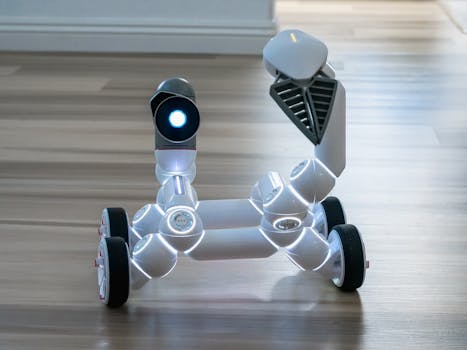
Smart Homes 2025: The Rise of AI-Driven Devices
Smart Homes 2025: The Rise of AI-Driven Devices is transforming the way we live, work, and interact with our living spaces. With the integration of Artificial Intelligence (AI) and Internet of Things (IoT) technology, homes are becoming more automated, efficient, and responsive to our needs.
Introduction to Smart Homes
A smart home is a residence that uses advanced technology to automate and control various aspects of the home, such as lighting, temperature, security, and entertainment. The concept of smart homes has been around for several decades, but recent advancements in AI and IoT have accelerated its development and adoption.
AI-Driven Devices in Smart Homes
AI-driven devices are the backbone of smart homes, enabling seamless control and automation of various systems. Some examples of AI-driven devices include:
- Virtual assistants, such as Amazon Alexa and Google Home, that can control lighting, temperature, and entertainment systems with voice commands.
- Smart thermostats, such as Nest, that can learn a home’s temperature preferences and adjust the temperature accordingly.
- Security cameras, such as August, that can detect motion and send alerts to homeowners’ smartphones.
- Smart home hubs, such as Samsung SmartThings, that can integrate multiple devices and systems, enabling centralized control and automation.
Benefits of Smart Homes
The benefits of smart homes are numerous, including:
- Energy efficiency: Smart homes can optimize energy consumption by automatically turning off lights, appliances, and heating/cooling systems when not in use.
- Convenience: Smart homes can streamline daily routines, such as adjusting the lighting and temperature, with voice commands or automated schedules.
- Security: Smart homes can enhance security with advanced surveillance systems, motion detection, and alerts to homeowners’ smartphones.
- Comfort: Smart homes can create a comfortable living environment by adjusting the temperature, lighting, and entertainment systems to a homeowner’s preferences.
Future of Smart Homes
The future of smart homes is exciting, with emerging technologies, such as 5G networks, edge computing, and machine learning, expected to further enhance the capabilities of smart homes. Some potential developments include:
- Increased adoption of voice-controlled devices, enabling more natural and intuitive interactions with smart home systems.
- Integration of smart homes with wearables and health monitoring devices, enabling personalized health and wellness services.
- Development of new smart home devices, such as smart windows and smart furniture, that can adjust to a homeowner’s preferences and needs.
Conclusion
In conclusion, Smart Homes 2025: The Rise of AI-Driven Devices is revolutionizing the way we live, work, and interact with our living spaces. With the integration of AI and IoT technology, homes are becoming more automated, efficient, and responsive to our needs. As the technology continues to evolve, we can expect to see even more innovative and exciting developments in the world of smart homes.






